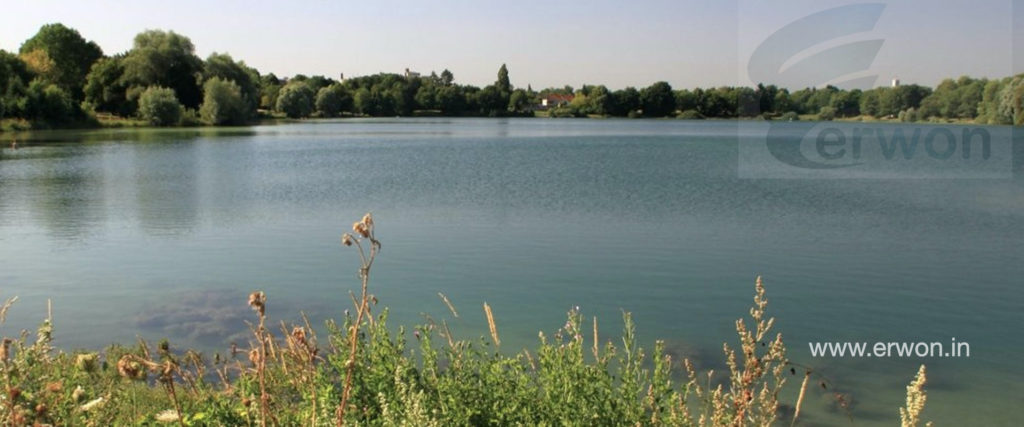
LAKE RESTORATION:
Erwon Energy uses different techniques aiming to bring a lake back to or closer to anthropogenically undisturbed conditions. Usually, we refer to methods used inside the lake, but sometimes it also refers to measures taken outside the lake such as reduction of the external nutrient loading by improved wastewater treatment. We use various methods to improve the quality of water as well as to check the input source quality. We also take into consideration the beautification of the surroundings. These water bodies are used primarily for drinking water supplies, irrigation and/or recreation. Marginal aquatic vegetation and dense surrounding plantation are to be promoted because it checks erosion and helps improve water quality.
Degradation of Lakes :
Most lake pollution problems are caused by nutrients, contaminants, and sediments carried into the lakes. Soil particles carry more than 90 per cent of the organic nitrogen and phosphorus originating from upland agricultural practices. In a typical watershed, nutrients may come from sewage, wastewater, agricultural and urban runoff, and atmospheric fallout. In recent years, heavy use of fertilisers and pesticides and high rates of soil erosion has increased the severity of the problem. • High concentrations of nitrogen and phosphorus are the main causes of algal growth, which results in the deterioration of the lake water quality.

Erwon’s Lake restoration methods for improvement in water quality requires therefore interventions that address both the factors responsible for an increase in nutrient load and the accumulated nutrients. Our team uses methods Analysis of physicochemical parameters helps in the assessment of water quality, which is further required for evolving an appropriate restoration plan.
Although many techniques are potentially available to restore degraded lakes, the science of lake restoration is inexact, and the outcome of applying a given technique to a particular lake is difficult to predict accurately. We ensure that projects are monitored adequately so that the effects of various manipulations can be assessed properly. In this context, a lake restoration project should be considered as part of a long-term, ongoing management program rather than a one-time, permanent solution to a lake’s problems.

Water quality is also greatly improved through the use of aeration. Under oxygen-deprived or anoxic conditions, lake-bottom sediments release various gases and metals that can cause water quality problems. Proper aeration will allow for many of the factors contributing to poor water quality to be released at the oxygen-water interface. Aeration cannot only enhance water quality by stabilizing pH, reducing alkalinity, and removing carbon dioxide but can also greatly decrease the cost of pond treatments.
Aeration can also reduce the number of pond algae through a variety of processes. Through aeration, algae spores can be mixed towards deeper lake and pond areas, reducing the amount of time it is exposed to valuable sunlight and availability to grow.
Another important benefit of aeration is the reduction of Phosphorus (P) concentrations in ponds. Phosphorus is needed to support algae blooms, and once phosphorus enters a pond’s ecosystem it is very difficult to remove. It accomplishes this by using an oxidation reaction that causes the phosphorus to bind with naturally occurring iron. Once bound to the iron, this new form of phosphorus precipitates into the sediments where it remains unavailable for plant and algae growth as long as sufficient levels of dissolved oxygen are maintained.
Overall, it provides many different benefits to a pond’s ecosystem. Besides enhancing pond fish habitats, improving water quality, reducing algae, and removing phosphorus, aeration can also break down unwanted bacteria, help with mosquito problems, and remove foul odours from a lake — all by circulating the water and adding dissolved oxygen.


Know More about Pond Purification Products – www.pondpurify.com



